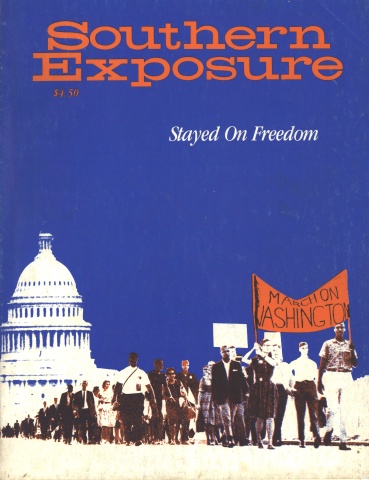On Nonviolence

This article originally appeared in Southern Exposure Vol. 9 No. 1, "Stayed on Freedom." Find more from that issue here.
Christian nonviolence is on the one hand a basic religious faith that God operates in human history, that evil can be transformed only by good, that love must remain love even in the presence of hatred, that forgiveness must prevail as the only mode of retaliation, that it is better to suffer obediently before God than to inflict suffering upon others, that evil is not met successfully with evil but only with radical good, the weapons of God Himself.
Such a faith is common to all the great religions of the world. From Mo Ti of ancient China through the prophets and Jesus, such a faith has been propounded, often died for, but rarely taken seriously by the mass of us.
On the other hand, nonviolence is the religious technique for encouraging and fomenting social change. It is a method rooted in the faith mentioned above. It is the social means to fulfill the social ends of the Kingdom. It is the demand of God upon those who would be the citizens of His Kingdom both today and tomorrow.
As a technique, every nonviolent strategy is determined and shaped by the essential faith, Love, the Cross, the gracious work of God both in the past and now. Thus expediency is always ruled out.
The pure technique loses out to the faith in action, to the resistance in love which retains a quality of creativity throughout the social process. Means and ends become one and the same thing.
Paul LePrad, one of Nashville’s finest nonviolent warriors, manifests the action which stems from faith. During a recent sit-in, he was hauled off a lunch counter stool by a group of white men, beaten, kicked and clobbered over the head. As his assailants left, he stood up, brushed himself off and returned to his seat.
Such an act requires the faith and hope given by God alone. It is analogous to what the entire ministry and life of Jesus proclaims. This is nonviolence